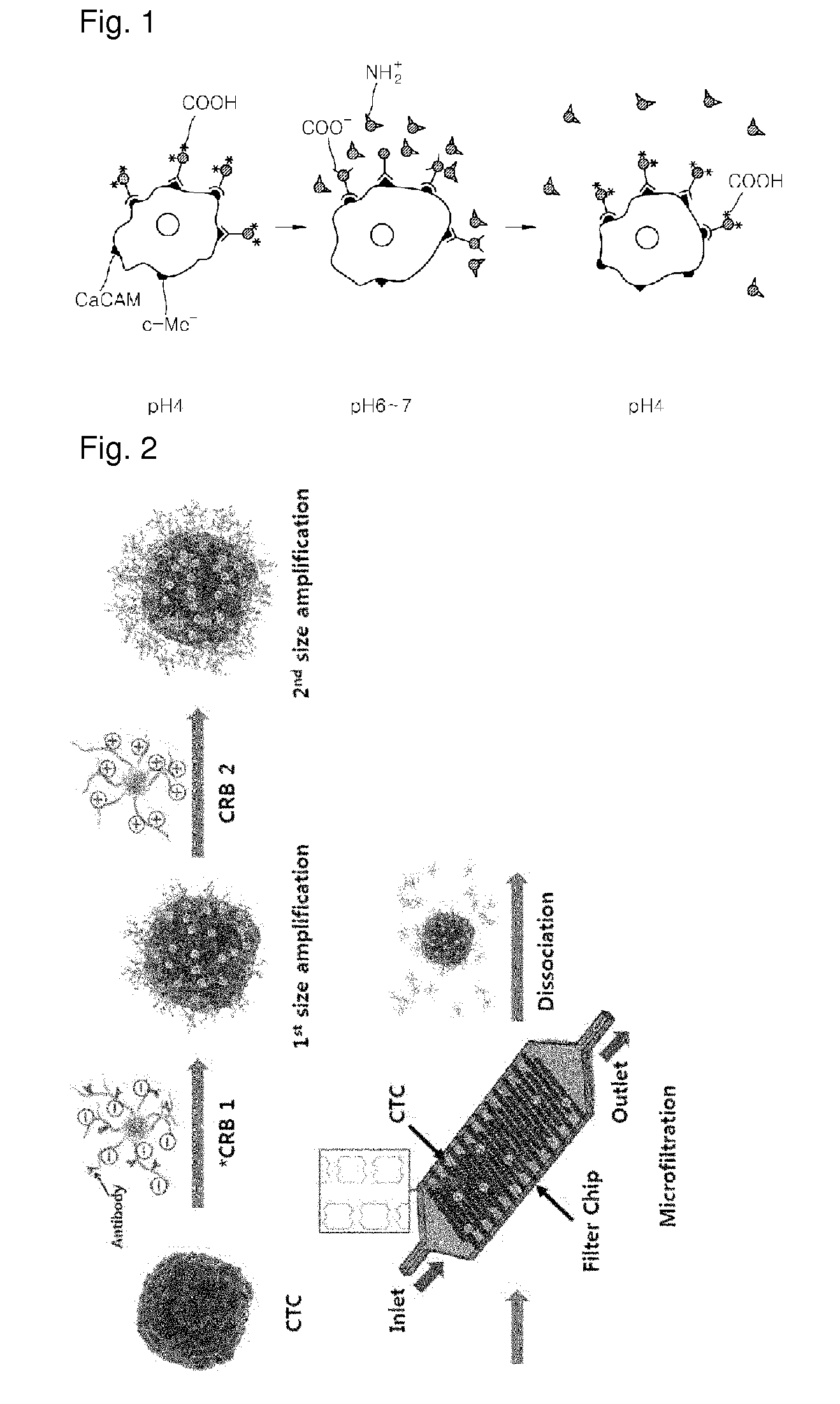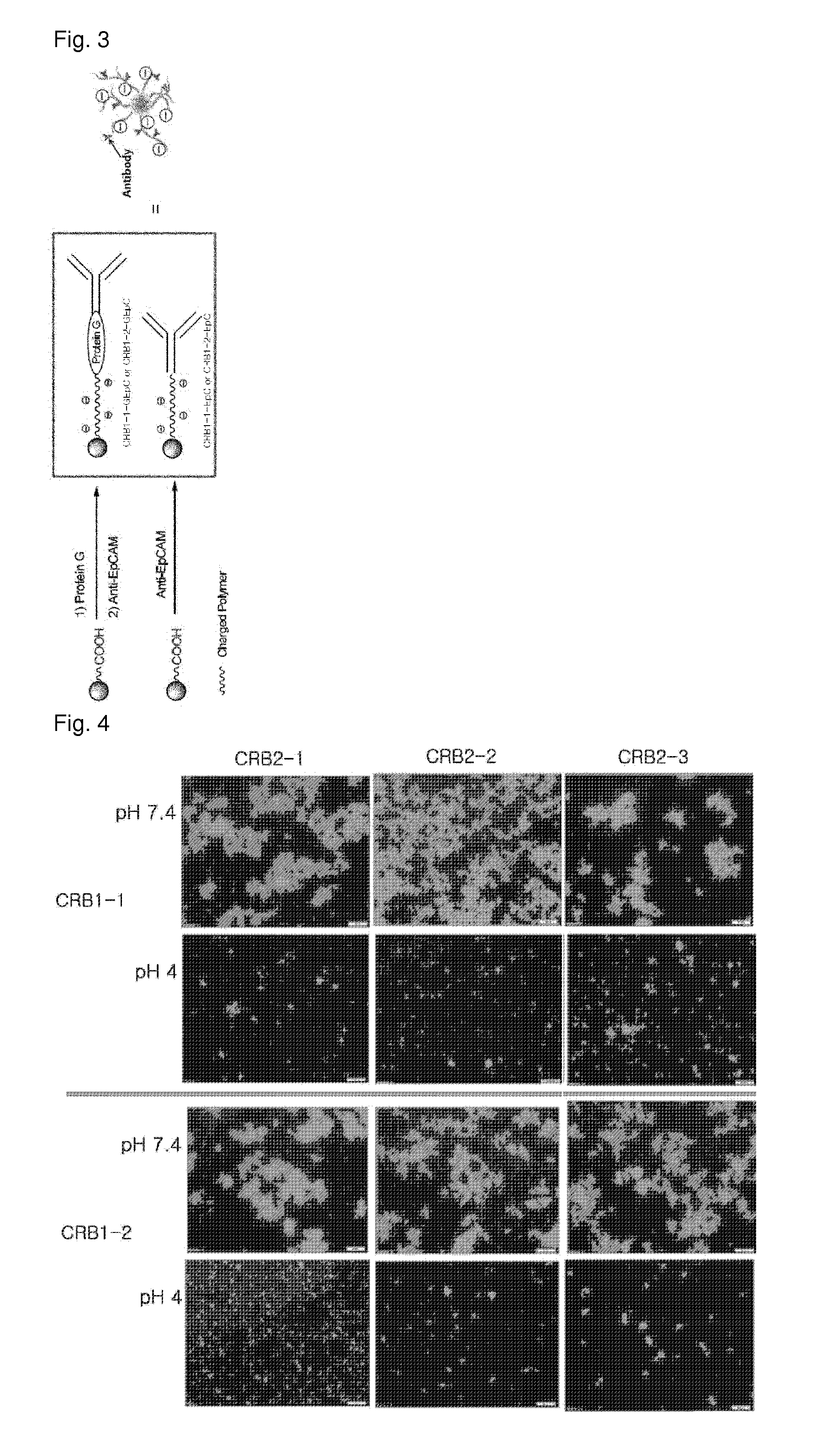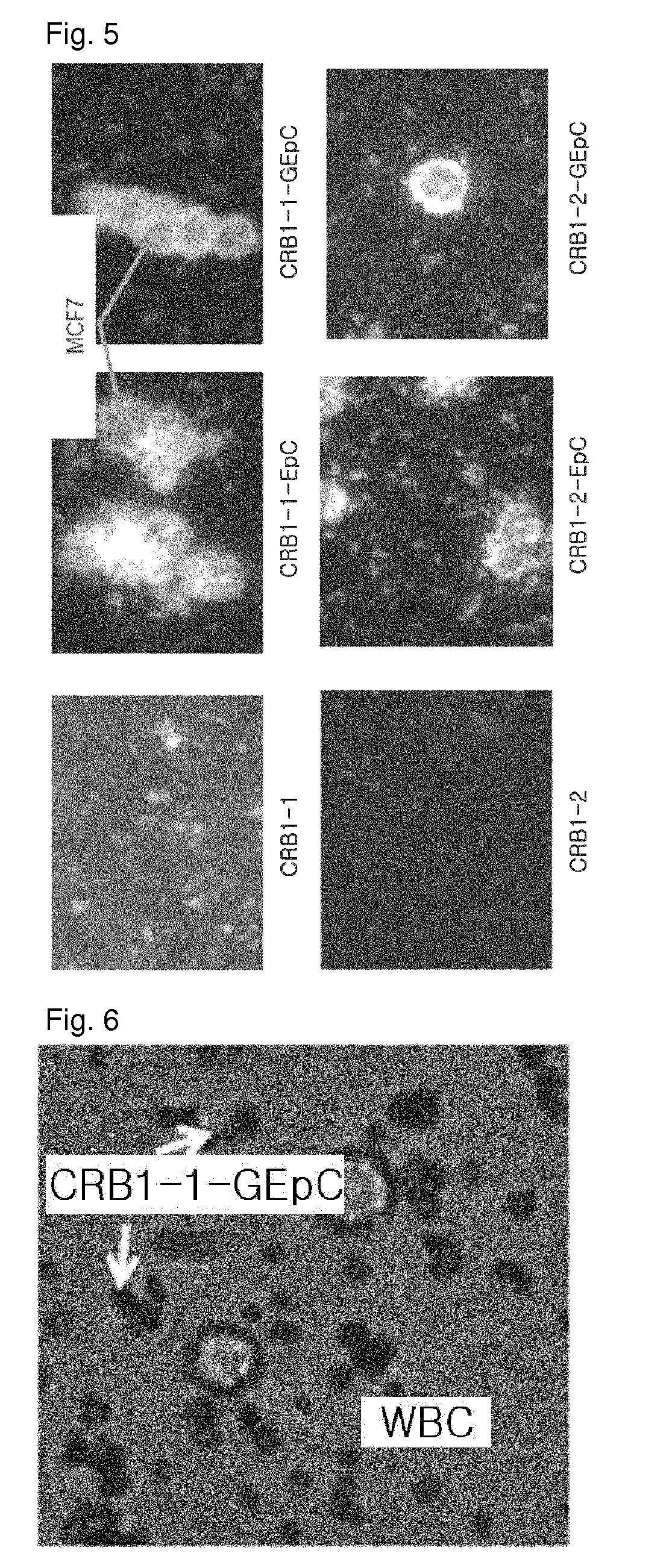Method and kit for isolating target cell
a target cell and kit technology, applied in the field of methods and kits for isolating a target cell, can solve the problems of limited applicability in diagnosing and monitoring tumors, difficult to detect tumors and grasp the number of cells, and difficulty in determining whether tumors have metastasized to another site, etc., to achieve the effect of increasing the size of the target cell in the overall field
- Summary
- Abstract
- Description
- Claims
- Application Information
AI Technical Summary
Benefits of technology
Problems solved by technology
Method used
Image
Examples
example 1
Manufacture of a Particle Having Charges (Charge Reversible Bead, CRB)
[0077]A particle having negative charges in a neutral pH and a particle having positive charges in a neutral pH were each manufactured in the following manner.
[0078]First, polystyrene beads (Polysciences, Inc) with a diameter of about 1 μm to about 3 μm were prepared, and then a particle having negative charges in a neutral pH was manufactured by treating the polystyrene beads with N-hydroxysuccinimide (NHS) / 1-ethyl-3-[3-dimethylaminopropyl]carbodiimide hydrochloride (EDC) and linking an acrylic acid-maleic acid copolymer or a styrene sulfonic acid-maleic acid copolymer to the polystyrene beads. A polystyrene particle having the acrylic acid-maleic acid copolymer was referred to as CRB 1-1, and a polystyrene particle having the styrene sulfornic acid-maleic acid copolymer was referred to as CRB1-2. In addition, a particle having positive charges in a neutral pH was manufactured by treating the polystyrene beads wi...
example 2
Manufacture of a Particle having Negative Charges, the Particle to Which an Antibody is Bound
[0079]As a cell used as a target cell to be isolated according to the principle was a breast cancer cell line MCF-7 (Korea Cell Line Bank), an antibody (Human EpCAM / TROP1 Fluorescein MAb (Clone 158206), FAB9601F, R&S system) specifically binding to EpCAM as a surface marker of a cancer cell existing therein was selected. Subsequently, the CRB1-1 or CRB1-2 manufactured in Example 1 was put into a PBS solution including 5% BSA, an antibody (0.65 mg / ml) specifically binding to EpCAM is added into the resulting solution, and the mixture was gently stirred at room temperature for about 2 hours. As a result, CRB1-1 (referred to as CRB1-1-EpC) or CRB1-2 (referred to as CRB1-2-EpC) having an antibody specifically binding to EpCAM was manufactured. In addition, in order to enhance the directionality during binding of the antibody, CRB1-1 or CRB1-2 was put into a PBS solution including 5% BSA, protein...
example 3
Identification of Aggregation and Dissociation Between CRBs
[0080]When the CRBs manufacture in Examples 1 and 2 were mixed, experiments were performed to see whether the CRBs may be aggregated and dissociated according to the pH of the ambient environment. Each of 30 μl of CRB2-1, CRB2-1, and CRB2-3 was mixed with each of 30 μl of CRB1-1 in a test tube including a PBS solution, a NaOH solution was added portionwise into the resulting solution, the pH was titrated to about 7.4, and the mixture was allowed to stand for about 1 hour. For CRB 1-2, the aggregation and dissociation was performed in the same manner as above. In the process, NaOH was added for reaction for about 1 hour, HCl was added for reaction for about 1 hour, and then a fluorescent microscope (Olympus IX-81) was used to identify whether the particles had been aggregated and dissociated. It was identified by an observation of the intensity of fluorescence of Texas Red through the fluorescent microscope that the two diffe...
PUM
| Property | Measurement | Unit |
|---|---|---|
| diameter | aaaaa | aaaaa |
| diameter | aaaaa | aaaaa |
| diameter | aaaaa | aaaaa |
Abstract
Description
Claims
Application Information
 Login to View More
Login to View More - R&D
- Intellectual Property
- Life Sciences
- Materials
- Tech Scout
- Unparalleled Data Quality
- Higher Quality Content
- 60% Fewer Hallucinations
Browse by: Latest US Patents, China's latest patents, Technical Efficacy Thesaurus, Application Domain, Technology Topic, Popular Technical Reports.
© 2025 PatSnap. All rights reserved.Legal|Privacy policy|Modern Slavery Act Transparency Statement|Sitemap|About US| Contact US: help@patsnap.com



